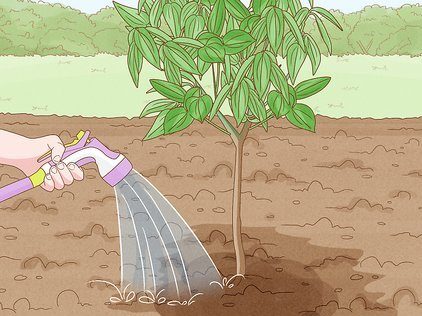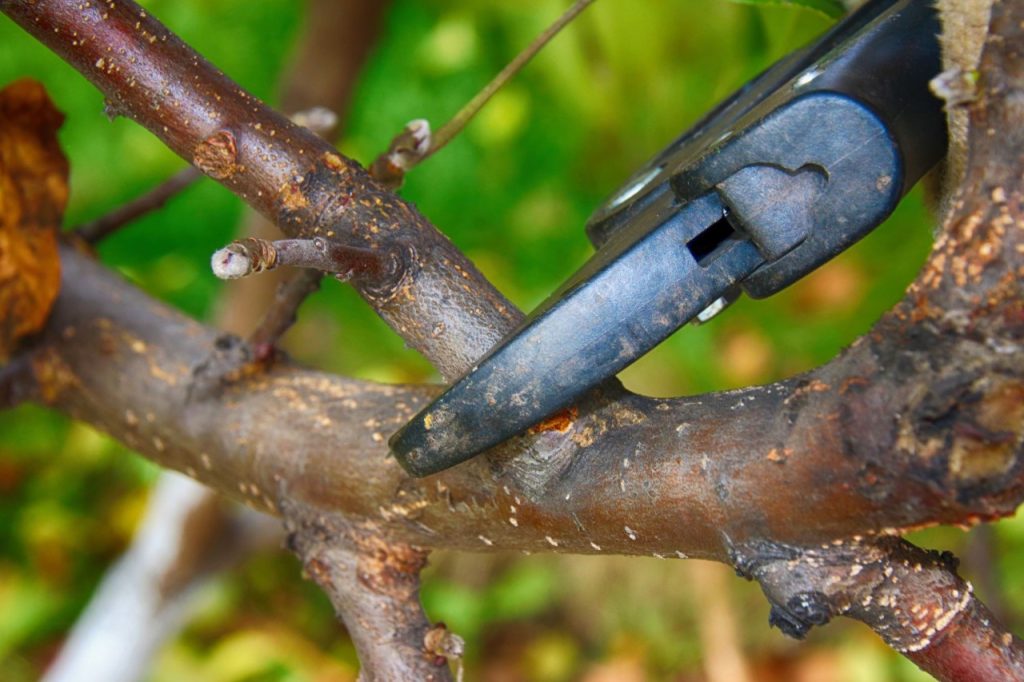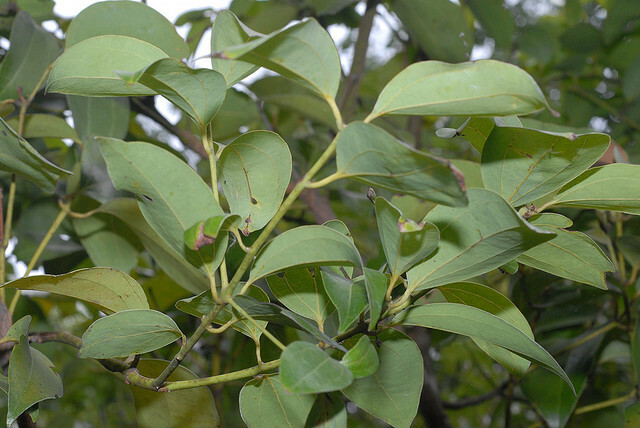Planting cinnamon indoors can be a rewarding experience, allowing you to enjoy the aromatic fragrance and potentially harvest your cinnamon bark. Cinnamon (Cinnamomum verum or Cinnamomum cassia) is a tropical tree that thrives in warm and humid conditions.
Growing cinnamon indoors requires careful attention to the plant’s needs, including light, temperature, soil, water, and humidity. In this comprehensive guide, we’ll walk you through the step-by-step process of planting cinnamon indoors, from selecting the right variety to caring for your cinnamon tree as it grows.

Selecting the Right Cinnamon Variety
Before you start planting cinnamon indoors, it’s important to choose the right variety for your growing conditions. There are several types of cinnamon, with Cinnamomum verum (Ceylon cinnamon) and Cinnamomum cassia being the most commonly cultivated. Ceylon cinnamon has a sweeter and more delicate flavor than cassia, which has a stronger and spicier taste. Both varieties can be grown indoors, but it’s essential to know which one you prefer.

For indoor cultivation, Ceylon cinnamon is often preferred due to its manageable size and milder flavor. It is well-suited for container gardening and can thrive in a variety of indoor conditions. When selecting a cinnamon variety, consider factors such as available space, climate, and the flavor profile you desire.
It’s important to note that cinnamon plants can take several years to mature and produce viable bark for harvesting. Therefore, patience is key in indoor cinnamon cultivation. Additionally, ensure that your chosen variety is compatible with indoor growing conditions, including adequate sunlight, well-draining soil, and proper humidity levels.
By carefully selecting the right cinnamon variety for your indoor plantation, you set the foundation for a rewarding and aromatic gardening experience, ultimately allowing you to enjoy the fresh, homegrown spice in your culinary endeavors.
What are the Materials Needed to Plant Cinnamon?
- Cinnamon Seeds or Seedlings: You can start from seeds or purchase young cinnamon plants from a nursery.
- Container or Pot: Choose a container with good drainage to prevent waterlogging. Ensure it’s large enough to accommodate the growing cinnamon tree.
- Potting Mix: Use a well-draining potting mix with a pH level between 5.5 and 6.5. You can mix perlite or sand to improve drainage.
- Fertilizer: Choose a balanced, slow-release fertilizer to provide essential nutrients for your cinnamon plant.
- Watering Can or Hose: Ensure you can easily control the watering to maintain consistent moisture.
- Light Source: Cinnamon trees thrive in bright, indirect light. If natural sunlight is insufficient, consider using a grow light.
- Humidity Tray: Cinnamon plants prefer high humidity. Placing a tray with water and pebbles near the plant can help maintain adequate humidity levels.

Step-by-Step Guide
1. Selecting the Planting Location:

Choosing the right planting location is vital for successful indoor cinnamon cultivation. Opt for a sunny spot with bright, indirect light for at least six hours a day. Cinnamon plants thrive in well-draining soil, so use a mixture of potting soil and perlite for optimal drainage.
Ensure the chosen location maintains a consistent temperature between 70-90°F (21-32°C). Avoid drafty areas and sudden temperature fluctuations. Adequate humidity is essential; mist the plants regularly and consider placing a tray of water near the cinnamon plant to maintain moisture levels. By providing these ideal conditions, you can create a conducive environment for healthy cinnamon growth indoors.
2. Preparing the Container:
Ensure your container has drainage holes to prevent waterlogging. Fill the pot with the potting mix, leaving some space at the top for watering.
To create an ideal container for indoor cinnamon cultivation, start with a well-draining pot that’s at least 12 inches in diameter. Use a high-quality, lightweight potting mix enriched with organic matter. Cinnamon prefers slightly acidic to neutral soil, so adjust pH levels accordingly.
Ensure the container has drainage holes to prevent waterlogging. Place a layer of small stones or broken terracotta pots at the bottom for additional drainage. Position the container in a location with bright, indirect sunlight, as cinnamon plants thrive in these conditions. Maintain consistent moisture levels, allowing the top inch of soil to dry out between waterings. Consider adding a layer of mulch to help retain soil moisture and suppress weeds. Regularly inspect for pests and diseases, ensuring a healthy environment for your indoor cinnamon plant.
3. Planting the Cinnamon Seeds or Seedlings:
To plant cinnamon seeds or seedlings indoors, start by filling small seed trays or pots with a well-draining seed-starting mix. Plant cinnamon seeds about 1/4 inch deep, covering them lightly with soil. Keep the soil consistently moist, maintaining a warm temperature around 70-80°F (21-27°C). Germination may take several weeks.

Once seedlings emerge, transplant them into larger pots, maintaining spacing of at least 6 inches. If using seedlings, transplant them directly into a prepared container. Provide bright, indirect sunlight and continue to keep the soil consistently moist. As the cinnamon plant grows, gradually acclimate it to its final indoor location with ample sunlight.
- If using seeds, plant them about 1/2 inch deep in the potting mix. Water the soil lightly.
- If using seedlings, transplant them into the center of the pot, ensuring the roots are covered with soil. Gently pat down the soil around the seedling.
4. Watering:
When watering an indoor cinnamon plant, maintain a consistent moisture level by allowing the top inch of soil to dry out before rewatering. Use room-temperature water to avoid shocking the plant. Ensure the container has drainage holes to prevent waterlogging, as excess water can lead to root rot.
Water the plant at the base to keep foliage dry and minimize the risk of fungal diseases. Adjust the frequency based on environmental conditions—more water may be needed in warmer, drier conditions. Regularly check the soil moisture and adapt your watering routine accordingly, striking a balance to provide adequate hydration without over-saturating the soil.
- Keep the soil consistently moist but not waterlogged. Water when the top inch of the soil feels dry.
- Avoid letting the soil dry out completely, as cinnamon plants prefer a consistently humid environment.
5. Providing Adequate Light:
Ensuring proper light conditions is crucial for the health of an indoor cinnamon plant. Place the container in a location with bright, indirect sunlight. Cinnamon plants thrive in well-lit areas but should be shielded from intense, direct sunlight. A spot near a north or east-facing window is generally suitable.
If natural light is insufficient, supplement it with fluorescent or LED grow lights, maintaining a light schedule of 12-14 hours per day. Rotate the plant periodically to ensure even exposure. Adequate light promotes robust growth and enhances the flavor and fragrance of the cinnamon. Regularly monitor the plant’s response to light and adjust its placement as needed.
- Place the container in a location that receives bright, indirect sunlight for at least 6-8 hours a day.
- If natural light is insufficient, use a grow light to supplement.

6. Maintaining Humidity:
Maintaining optimal humidity is essential for the well-being of indoor cinnamon plants. Cinnamon plants naturally thrive in tropical environments with higher humidity levels. Aim for a relative humidity of 50% or more. To achieve this, consider using a humidity tray filled with water and pebbles placed near the plant. Regularly misting the plant’s leaves with water can also help boost humidity. Grouping plants together can create a microclimate with increased moisture.
However, ensure good air circulation to prevent fungal issues. Periodically check a hygrometer to monitor humidity levels, adjusting your strategies accordingly to provide a consistently humid environment for your cinnamon plant.
7. Fertilizing:

Fertilizing your indoor cinnamon plant is essential for robust growth. Use a balanced, water-soluble fertilizer with a ratio of 10-10-10 or 14-14-14. Begin fertilizing in spring and continue every 4-6 weeks during the growing season, tapering off in fall and winter when the plant is in a dormant phase.
Dilute the fertilizer to half the recommended strength to prevent over-fertilization, which can harm the plant. Apply the fertilizer to damp soil to avoid root burn.
Consider incorporating organic matter, like compost, to enrich the soil. Regularly monitor the plant’s response to fertilizer, adjusting the feeding schedule based on its growth and health.
- Use a balanced, slow-release fertilizer every 4-6 weeks during the growing season (spring and summer).
- Follow the recommended dosage on the fertilizer packaging.
8. Pruning and Training:

Pruning and training are crucial for shaping a healthy and manageable indoor cinnamon plant. Begin pruning in the plant’s early stages to encourage a bushy, well-branched structure. Pinch back the tips of young shoots regularly to promote lateral growth. Remove any dead or diseased branches promptly to maintain plant health.
When the cinnamon plant reaches a desirable height, prune it to shape it and control its size. Use clean, sharp pruning shears to make precise cuts. Additionally, consider staking or tying up branches as the plant grows to provide support. Regular maintenance of pruning and training enhances the plant’s overall structure, appearance, and productivity indoors.
- Prune the cinnamon tree to shape it and encourage bushier growth.
- Consider staking the plant as it grows taller to promote an upright structure.
9. Harvesting Cinnamon Bark:
Harvesting cinnamon bark from an indoor cinnamon plant requires patience and careful timing. Cinnamon is typically harvested when the plant is at least two years old and has reached a height of about 3 feet. Select mature branches for harvesting. Use a sharp, clean knife to cut a 4- to 6-inch section of the bark from the base of the selected branch.
Avoid removing more than one-third of the total bark from a single branch to prevent stress on the plant. Allow the cut sections to dry and curl naturally. Harvest cinnamon sparingly, promoting continued growth and future harvests from the same plant
- Cinnamon bark can be harvested once the plant is mature enough (usually after several years). Carefully remove a portion of the bark, allowing the plant to grow.
10. Common Issues and Troubleshooting:
Common issues with indoor cinnamon plants include overwatering leading to root rot and inadequate light causing leggy growth. Ensure proper drainage to prevent waterlogging, allowing the soil to slightly dry between waterings. If leaves turn yellow, it may indicate a nutrient deficiency, requiring a balanced fertilizer.
Combat pests like spider mites or aphids with insecticidal soap. Maintain a warm and humid environment, as low humidity can lead to leaf browning. Prune diseased or dead parts promptly to prevent the spread of infections. Regularly inspect the plant for signs of stress, adjusting care routines to address issues promptly and ensure the overall health of your cinnamon plant.

- Watch for signs of pests, such as spider mites or scale insects, and treat promptly.
- Address any yellowing or browning of leaves by adjusting watering or light conditions.
Conclusion:
- Growing cinnamon indoors can be a fulfilling endeavor, offering not only the pleasure of cultivating a unique spice but also the enjoyment of a thriving, aromatic plant.
- By providing the right conditions, regular care, and patience, you can create an ideal environment for your indoor cinnamon tree to flourish.
- Whether you’re a seasoned indoor gardener or a novice, the process of planting cinnamon can be a rewarding journey filled with the delightful scent of this beloved spice.
